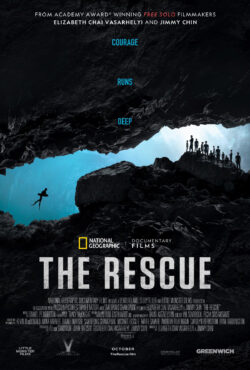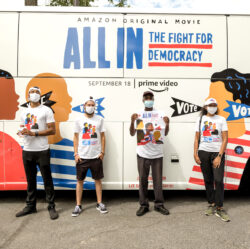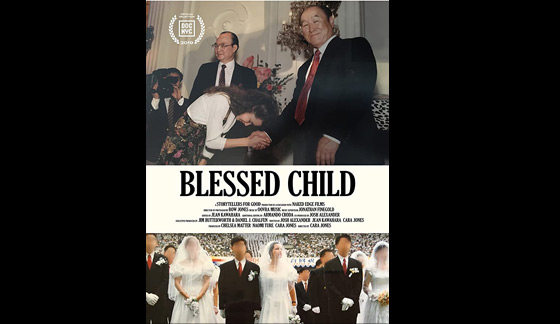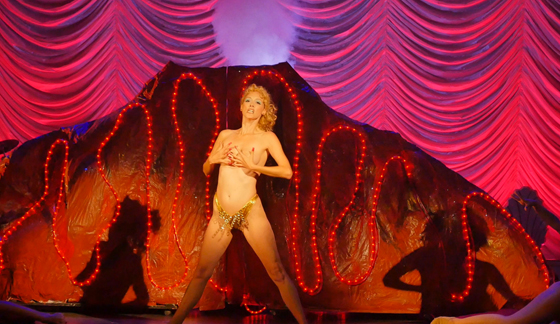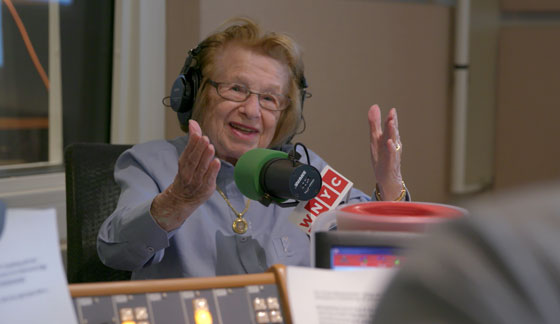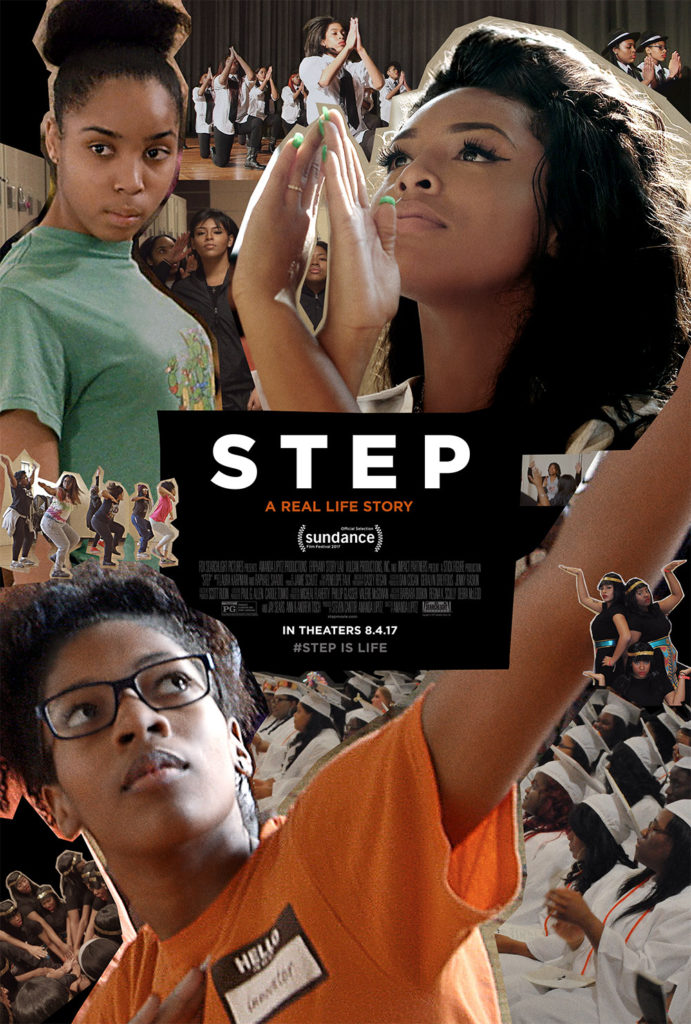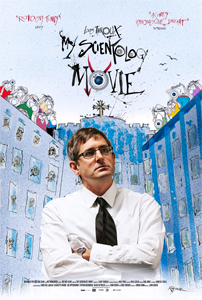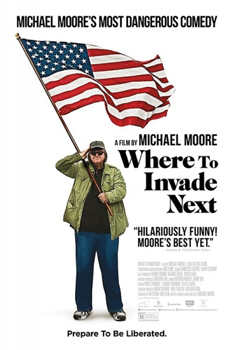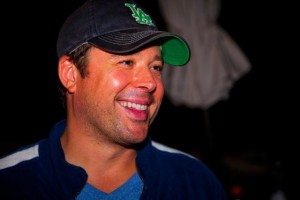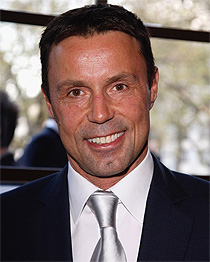British documentary filmmaker Louis Theroux is no stranger to controversial subjects. In his wide-ranging tv career, the unflappable Theroux has immersed himself in subcultures ranging from US TV infomercials to Neo-Nazis and the infamous Westboro Baptist Church. For his first feature film documentary, Theroux acted on a years-long fascination with the Church of Scientology. When the notoriously secretive Church wouldn’t admit Theroux to film their practices directly, the documentary took a much more unique approach. Theroux, director John Dower and crew turned instead to former Scientologists to share their experiences within the church and decided to film re-enactments of their stories. Their filming, including casting their own version of Church leader David Miscavige in the form of actor Andrew Perez, quickly drew the attention of the church. The crew finds itself being tailed, filmed and even confronted on public property. The resulting documentary is at once an entertaining examination of the alleged inner workings of the church as well as a realtime account of the lengths the church goes to to defend itself. The film made its debut at last spring’s Tribeca Film Festival where I sat down with Theroux as well as John Dower and Andrew Perez to discuss their impressions of the church and how the doc came together.
Lauren Damon: Before you started making the film, how much did you know, or thought you knew about Scientology?
Louis Theroux: I think I thought I knew quite a lot—
John Dower: You do know a lot.
Louis: Yeah, I mean but then to be honest with you, I’d first been interested in Scientology you know, more than 20 years ago. And then in 2002 or thereabouts, I made my first approach and took a tour of the celebrity center and basically was in negotiation to make a tv doc that way. That fizzled out. And then about ten years after that, our producer Simon Chinn came to me and said ‘Hey what about a theatrical doc? You know, we could do it on Scientology’ And by then—it was around then that the first book, Janet Reitman’s book, Inside Scientology came out, I read that…I mean the fact is that you could really make a full time job of kind of reading the stuff that comes out on Scientology. The challenge in a way is to not kind of sink into the quagmire…there’s so many threads that you can follow, you know what I mean?
John: You know there’s stories from the past that could be made to whole films themselves.
Louis: You could make a film about just what [ex-Church leader and My Scientology Movie star] Marty Rathbun did in the 80s.
John: The Lisa McPherson Story…
Louis: The Lisa McPherson story. Or you could do one of Clearwater in the 70s and 80s or Bob Minton. About how he went from being a critic to being a Scientology supporter. Or at least agnostic. I mean it’s a lot of individual…and then there’s whole family stories. Not just Lisa McPherson but other ones…There’s a lot. The challenge is not kind of lack of material. It’s a sort of an overabundance.
LD: And that’s also just before you even get to researching what the beliefs are which is also so involved.
Louis: That’s right.
LD: And then Andrew, what had been your experience?
John Dower, Louis Theroux and Andrew Perez
Andrew Perez: I knew just I’d heard some stories of experiences just sort of on the top—the intro levels of communications and courses. I knew that it was on the surface, or to beginners it was a kind of self-actualization, a kind of self-help, kind of therapeutic…I mean going through past trauma and weeding out sensory things that you associate with that. And seeing The Master. So I did have a kind of a good intuition about the introduction to it and why it makes some people get into it. And also the fact that there was also a sort of deep sea of mystery after that intro couple courses or whatever.
Louis: It’s really interesting because—you know when you read Dianetics, like the kernel of what Scientology is is basically just a kind of take on Pavlov’s dog, isn’t it? It’s just about sort of sensory associations.
Andrew: Yeah.
Louis: And when you read Dianetics, it’s got a volcano and it’s like “This is the most amazing book I’ve ever read in my life!” it’s all “Rome fell because of not having a science of the mind!”…Then you find out it’s all about you stubbed your toe and an ambulance went by and now every time you hear an ambulance, you get a sore toe. And you’re like “That’s IT?!” That’s the modern science of mental health? How could anyone think that that was the answer to life’s mysteries?
LD: Then going back, when you considered doing it as a tv series, what do you think it was that made it warrant making a feature movie?
Louis: That’s a good question. And in a way that’s maybe something John would be better at answering.
John: This is my first feature. Yeah, there are…little nuts and bolts, like I think you need a great musical score for instance. And I do think the music in this film is amazing. The composer Dan Jones did an extraordinary score in this film and it needs a sense of scale. If you want people to play eight or nine quid or fifteen bucks, you know they need to feel like they’re getting something with a sense of scale. And I think Scientology has that built into it anyway. And it needs to be entertaining, it needs to feel like you know, it’s…You can ask Michael Moore, he says about his films he wants them to be like date movies. That people will go on dates. You know, it’s a big deal to go to the cinema these days. And I’d like to think that that’s in our film. I’d like to think that it’s entertaining. It’s got to be, it’s a movie.
Louis: For me, I think also it has to do with like in my tv stuff, it is fundamentally journalism and so I have agency but in terms of my place in the film and how I kind of change and push through the journey through the tv shows, but in this one I really do actually really kind of take the story—take the bull by the horns in a sense. So you’ve got—I’m much more of a protagonist which I think is important for the film to work….You know I’m the guy ‘on a mission’ in a sense.
LD: Had it ever crossed your mind to try and surreptitiously join the church?
Louis: Yeah we talked about it—
John: That was floated at one point.
Louis: Obviously when you’re brainstorming, you don’t—everything’s about ‘let’s talk about…well what’re the merits? What’re the ethics of doing this? How would it feel?’ I think quite quickly we concluded that it didn’t feel right.
John: Bad faith…for something like this.
Louis: Plus you wouldn’t even get to see very much. You know without actually having access to someone inside the SeaOrg and even then it might takes months to really get deep inside…Actually while we were making it, I did go along to the Los Feliz mission to just see what happens when you go in the front door. And just show up and say ‘What is this all about?’ To me it was interesting because I’m fascinated by Scientology but imagining if we’d been filming, it would not have been very interesting. It’s just there is a sort of hard-sell that they do at the church.
Marty Rathbun and Theroux filming an auditing re-enactment
LD: How long were you shooting your re-enactments before you were aware you were being tailed?
Louis: Marty said that ‘This car has turned up before’, do you remember that?
John: I think we were probably being tailed when we didn’t realize. There was a couple of times—that car, that white Toyota pickup truck that’s in that scene—one of our PA’s Shane said ‘I’ve seen that at the hotel before.’ You know, a good few days before. Maybe even on a previous trip. So we were probably being tailed but we didn’t realize.
Louis: The first time Marty tippled that we had been tailed, though I don’t think I believed him at the time, was the day we did the drills at the studio.
John: Oh yeah, he dashed around the corner, didn’t he?
Louis: Yeah, I mean that was the same day as two people turned up filming us who were journalists. I don’t know if they actually were Scientologists but on the same day Marty said ‘This car is suspicious.’
LD: So like a couple weeks in?
Louis: Well no, it was a while, we were filming more than a year. About two months in.
John: So how did they know that we put out a casting for David Miscavige?
Louis: I mean that casting went out on the wire, didn’t it?
John: I guess so.
Louis: So it wasn’t a secret.
Andrew: But yeah that’s one thing that we’ve said was that they knew that you’d done the casting for a young David Miscavige with Marty in the room.
John: With Marty, that was the kicker. So I wonder did they follow Marty the first day he arrived—
Louis: Maybe.
John: So maybe they were following us from the—
Louis: Anytime Marty came into LA, there’s a chance they might have known about it.
LD: Andrew, when you saw that casting how did you react to it? How did you feel knowing you were kind of playing half yourself and half re-enactments?
Andrew: I just came in, I knew they were doing re-enactments, it said like a BBC documentary on Scientology and I just—I knew that they were kind of shooting outside as I was entering, so I was aware of that and I just focused on playing the role. And I didn’t know where it was all going. It was kind of fun…They would go back to England and then they would come back and have some more material for me and it was kind of a workshop at first. Mike Rinder would show up, Marty was normally there. So I was learning through Marty. They were shooting the rehearsals. There’s a lot that you don’t see that was just the process of….So we were in a blackbox theater listening, watching Marty lead some auditing kind of sessions. Then we did that day at the Mack Sennett Studios, a full day of communication TR training and things. But yeah, I knew that there would be some stuff of just me being me…but I just wanted to focus on the role.
LD: Now do you guys have any idea of where all that footage that they shot of you goes?
Louis: I think it goes into an editing suite somewhere probably in Hemet, California and I think they will be piecing it together into some kind of online video.
John: I suspect they’re waiting for the film to be here. It’s already been seen in the UK—been to festivals in the UK, I think they’re more interested about…I have no idea.
Louis: I think they’re waiting to see what happens with our film and if our film reaches a certain kind of having a profile, that they will release their counterpunch.
John: It would be great if—obviously it would never happen but—I imagine theirs is going to be a shorter film given they only filmed us on two or three occasions…It would be great if, you know how they used to have shorts before the main feature? It would be nice to have theirs.
LD: Is the church as prevalent in the UK as it is here?
Louis: No. It exists and it has high profile kind of missions in locations—orgs, they call them— on Tottenham Court Road and by Paddington…but in terms of their actual number of followers, I think it’s really small.
John: No, it’s quite telling that there’s a road in London—Tottenham Court Road— and they have an Org on Tottenham Court Road and actually there was a time when it was very, in 90s even, I worked in the company around the corner and there were always people sitting outside, always people trying to get you to do a personality test but it’s just dead now. There’s like one person at the front desk, which is quite telling in and of itself.
My Scientology Movie is in select theaters, OnDemand and available to stream on Amazon and iTunes starting March 10th. For more information visit MyScientologyMovie.com.



